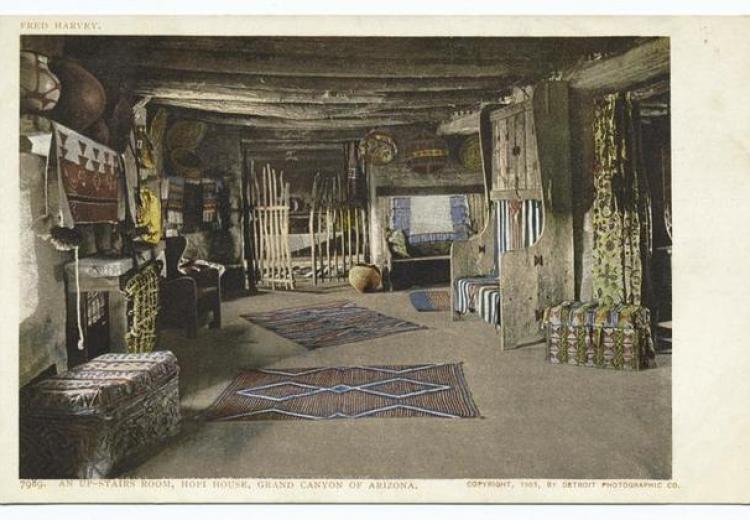Lesson 1. Hopi Place Names

An upstairs room in a Hopi house, Grand Canyon, Arizona.
New York Public Library, Public Domain Archive.
The sovereign Hopi Nation officially occupies over 1.5 million acres in northern Arizona. Traditionally though, the Hopi Tribe lived and traveled in a much more extensive area, including parts of southern Utah and Colorado and into eastern New Mexico. Places sacred to the Hopi extend far beyond the Arizona reservation borders to encompass the San Francisco Peaks near Flagstaff and the Grand Canyon. Though many important places in this area have been assigned Spanish or English language names, some are still known by their Hopi names.
In this lesson, students practice map-reading skills to find important places in Hopitutskwa, “Hopi Land.” Students then use English translations of Hopi place names to deepen their understanding of the Hopi landscape and to make inferences about relationships between Hopi people and their land.
Additionally, students examine local and regional maps from their home and make inferences about the relationships their community has to its land. Finally, students illustrate their personal geographies, creating maps of the important and meaningful places in their lives.
Guiding Questions
How are place and culture interconnected?
How have Hopi cultural practices changed over time?
Learning Objectives
Analyze maps of Hopi Land and make inferences about relationships between Hopi landscape and culture.
Determine the significance of a place name and assess the values that place names reflect.
Analyze traditional and contemporary practices that relate to place and Hopi culture.
